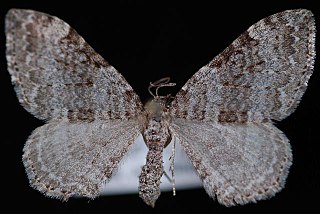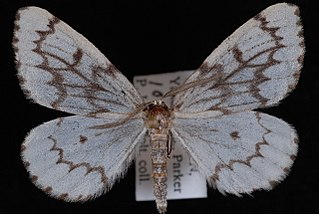| Phaeoura perfidaria | |
|---|---|
| Scientific classification | |
| Kingdom: | |
| Phylum: | |
| Class: | |
| Order: | |
| Family: | |
| Genus: | |
| Species: | P. perfidaria |
| Binomial name | |
| Phaeoura perfidaria Barnes & McDunnough, 1917 | |
| Synonyms | |
| |
Phaeoura perfidaria is a species of moth in the family Geometridae (geometrid moths). [1] [2] [3] It was described by William Barnes and James Halliday McDunnough in 1917 and is found in North America, [2] where it has been recorded from Arizona, California, Colorado and New Mexico.

Moths comprise a group of insects related to butterflies, belonging to the order Lepidoptera. Most lepidopterans are moths, and there are thought to be approximately 160,000 species of moth, many of which have yet to be described. Most species of moth are nocturnal, but there are also crepuscular and diurnal species.
William David Barnes was an American entomologist and surgeon. He was the son of Dr. William A. and Eleanor Sawyer Barnes. He graduated salutatorian from the Decatur High School in 1877. Then spent a year at Illinois State University followed by a year at University of Illinois. In 1879, he entered Harvard Medical School and graduated in 1886. While at Harvard, he met naturalist Louis Agassiz and his love of Lepidoptera grew. Agassiz taught him how to preserve and classify the butterflies. He completed an internship at Boston City Hospital and then studied abroad in Heidelberg, Munich and Vienna. In 1890, Dr. Barnes came home to Decatur and opened his medical practice. That same year he married Charlotte L. Gillette. The couple had two children: William Barnes Jr., and Joan Dean Gillett Barnes.
James Halliday McDunnough was a Canadian entomologist best known for his work with North American Lepidoptera, but who also made important contributions about North American Ephemeroptera.
Contents
The wingspan is 40–47 mm.
The MONA or Hodges number for Phaeoura perfidaria is 6768. [4] [5]



